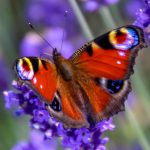What gardeners grow can have a huge impact on butterfly and moth numbers nationally, so find out what plants attract these beautiful insects and what we can do to help them. Once-common species are vanishing Small tortoiseshell butterfly. Copyright Shirley Freeman Butterflies and moths are important pollinators and, along with caterpillars, are vital food for birds like robins and blue tits as well as bats.
However, their habitats have faced catastrophic declines. Once-common species like the small tortoiseshell have dropped by up to 80% in the last 30 years in some areas. An ideal butterfly garden has a wide variety of plants throughout the year to support their life cycles – for butterflies and moths emerging from hibernation, egg-laying females, caterpillars and then as adults.

What should I plant to help butterfly and moth numbers? Early-flowering species such as are good sources of nectar. These could be followed by and, finally, which are a great late-season asset in the autumn. Brimstone butterfly on red clover.
Copyright Jim Higham Many wildflowers and long grasses are also excellent larval food-plants. Whether your garden is large or small – or simply a flowering window-box – it could throw these declining insects a lifeline, especially in urban areas. “Our garden flowers and plants provide a rich source of rejuvenating nectar for these much-loved garden visitors as they emerge from hibernation to herald the start of spring.
“Go wild in your garden and leav.
















